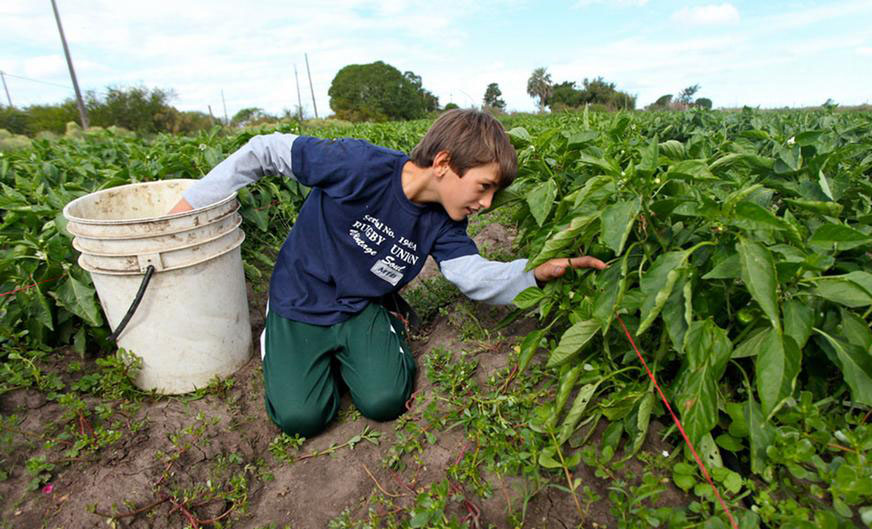An estimated 500,000 children are working on tobacco fields in the United States, most of them in extremely hazardous conditions. World Day Against Child Labor, on June 12, aims to highlight the plight of the children.
Celia Ortiz was only 11 when she started working on tobacco fields in North Carolina. When most children were sleeping late, watching television, or riding their bicycle during spring breaks, Celia would wake up each morning at five to harvest crops for 10 or 12 hours in extremely dangerous conditions. She worked on tobacco fields for seven years, DW reported.
Celia is taking part in the World Day Against Child Labor on June 12 with members of the Child Labor Coalition - a group of nonprofit organizations including Human Rights Watch. The coalition gathered in Washington DC to raise awareness and discuss problems and possible solutions for the country’s child labor issue.
There are four states that produce 90 percent of the country’s tobacco – North Carolina, Kentucky, Virginia, and Tennessee – and in these states children as young as 7 are working 50-60 hours per week harvesting and cultivating tobacco plants, in most cases with severe repercussions. Human Rights Watch estimates nearly half a million such children work on these fields.
Coursen-Neff, executive director of the children’s rights division at Human Rights Watch, took part in an initiative that spoke to over 140 child workers across the United States. “Three-quarters of them reported frequently feeling dizzy, nauseous, or vomiting in the fields,” she said.
Two-thirds of them displayed symptoms of Green Tobacco Sickness, or nicotine poisoning. This occurs when workers are exposed to wet tobacco plants, through either rain or morning dew, and contact with the plants causes their skin to absorb the toxins. This is extremely hazardous to the younger workers. “Nicotine exposure during adolescence leads to mood disorders, attention deficit, lasting cognitive disorders,” Coursen-Neff explained.
Child workers were not given proper protection against the nicotine exposure or frequent usage of pesticide sprays on the crops, which would also fall on their clothes and skin. They were left to find their own ways of protection.
The conditions grew worse as Celia worked over the years. Eventually the farmers stopped providing water to the workers. The children brought their own to stay hydrated, but that led to more complications. “Going to the restroom is another problem. You would have to go to the other side of the field just so nobody could see, just to get some privacy. It’s dangerous, especially being a young lady.” These lengthy trips for solitude were often met with harsh demands for faster and harder work.
The environment also presented psychological stresses of insecurities and self-doubt.
The Child Labor Coalition is hoping to lobby for changes to the law, amendments to the Fair Labor Standards Act of 1938 that would prohibit child employment in tobacco-related agriculture by “deeming such employment as oppressive child labor.”


